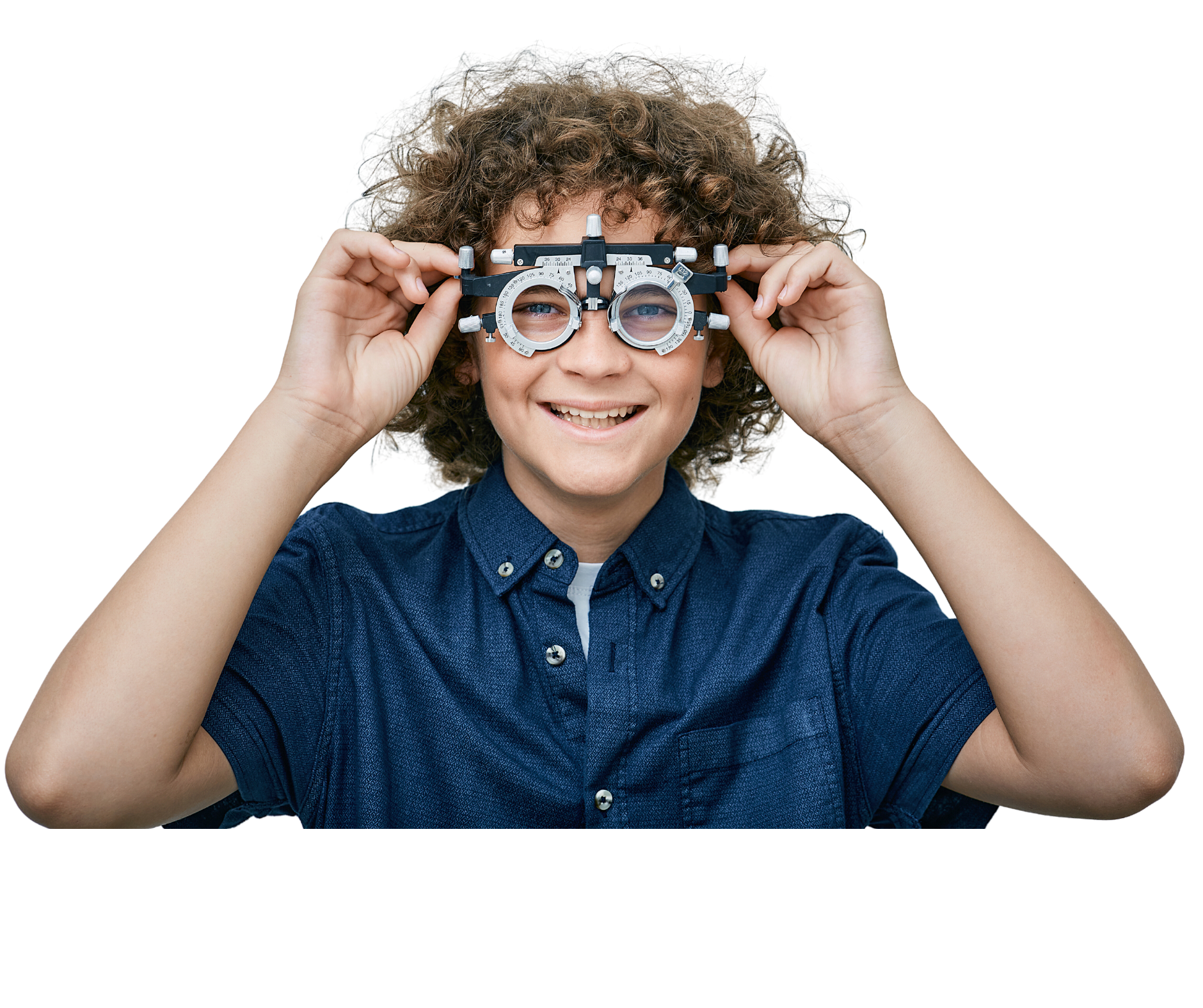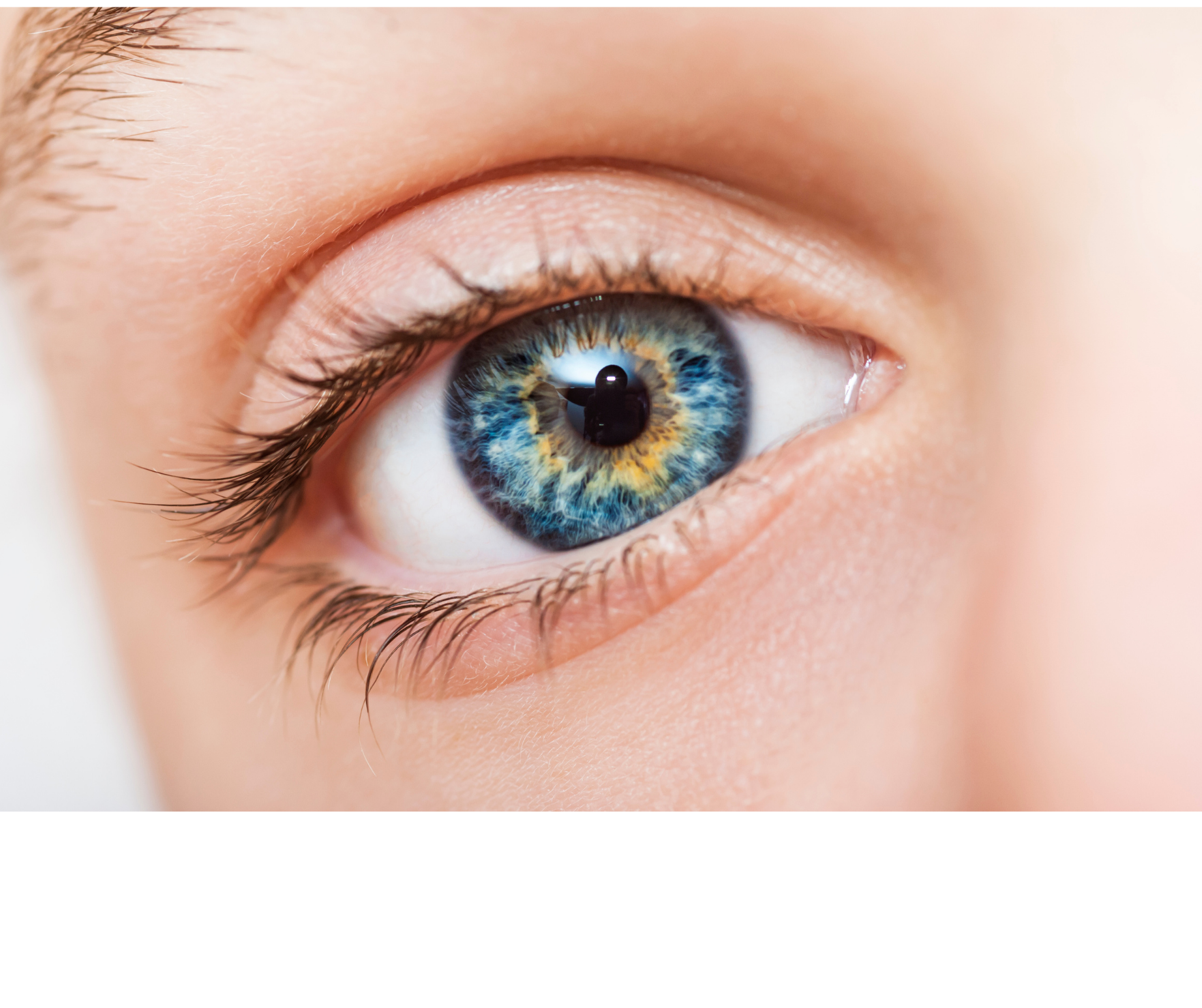Your Guide to Myopia Management in Kids
Non-Surgical Myopia Treatment
State-of-the-Art Solutions
For Children and Young Adults

Learn All About Myopia Management in Kids
The prevalence of myopia is on the rise, and the myopia epidemic is gaining more and more attention in mainstream media every day. Go ahead and give yourself a big pat on the back for being proactive in learning more about myopia and myopia awareness. We have a lot of information to share with you, so buckle up and enjoy the ride! Educating yourself and sharing your newfound knowledge with others is key to conquering myopia and spreading awareness of this potentially sight-threatening condition.
But first, what exactly is myopia? And why is myopia awareness important?
-
What is Myopia?
Myopia, or nearsightedness, is an eye condition in which the shape or length of the eye prevents light from focusing directly on the retina, resulting in blurred vision. For someone who has myopia, objects in the distance appear fuzzy or blurry, while objects up close still look crisp and clear.
Pathological Consequences of Myopia
Myopia is associated with several pathologic eye conditions, leading to irreversible vision loss. Myopia is the leading cause of preventable blindness worldwide.
According to a review by the National Institute of Health, "treatment for preventing myopia progression is reliant on effective screening and initiating treatment early in life."
-
When Does Myopia Onset?
Myopia typically develops during childhood and can onset as early as five years of age. Myopia tends to progress and worsen at an accelerated rate from a young age through the teen years while the child is growing. A proactive approach has shown to be most effective in slowing down the progression of myopia, and most importantly preventing the progression to "high myopia."
Statistics have shown a worsening in the degree of myopia, as well as an increase in the prevalence of myopia over the last twenty years. Genetics, natural eye growth, and youth lifestyle changes have all contributed to this growing concern. Decreased outdoor activity time and increased digital device use are the main causes of reduced capacity for distance vision in children.
-
The Myopia Epidemic
Myopia is the most common refractive error globally, affecting an estimated 2.6 billion people in 2020 (2). The prevalence of myopia is set to increase substantially in the coming decade, with 3.36 billion people estimated to be impacted by 2030. By 2050, half of the world's population will be myopic.
Myopia is a global health crisis for children in particular after its progression was accelerated during the COVID-19 pandemic. Children were at home and screentime, as well as other up-close activities, increased, while time going outside decreased. Prior to the COVID pandemic, the only successful treatment options for myopia control were surgical, invasive, and/or unsuitable for young children (and they are the ones that need it most!). The urgent need for a kid-friendly solution to this health crisis has never been higher.
Amid the growing global concern about children's vision, the Guardian Digital Control System (DCS) was created as a revolutionary method for accessible myopia management in kids.
If you find what you read here useful, go ahead and click share to start your myopia awareness journey!
How do I know if my child has myopia or is at risk for developing myopia?

What are the symptoms of Myopia?
Recognizing the symptoms of myopia in children can be difficult because they may not be able to effectively communicate that they are struggling with their vision. Symtoms may present by complaints of having difficulty seeing the board clearly in a classroom, playing sports, reading on a screen, or recognizing faces.
Here are some other common symptoms of myopia:
- Squinting or partially closing the eyelids to see clearly
- Blurry vision when looking at distant objects
- Headaches and Eyestrain
KEEP AN EYE OUT!!
Younger children in particular may not be able to express their difficulty seeing, but they may have the following behaviors that suggest difficulty seeing:
- Blinking excessively
- Rubbing eyes frequently
- Sitting close to the TV
- Persistently squint
- Seem unaware of distant objects
If your child has any of these symtoms, contact your local eye care professional. You can also see a list of Guardian Providers by clicking the button below.

Risk Factors for Developing and Accelerating Myopia
Genetics
Myopia, or nearsightedness, is genetic and tends to run in families. If you are nearsighted, your child has an increased risk of developing myopia. The risk is even higher if both parents are nearsighted.
Screentime
Studies have shown that children who use computers or smart devices for long periods have a greater risk of developing nearsightedness.
Other Close-Up Activities
Prolonged reading or other close-up activities are associated with an increased risk of myopia (nearsightedness).
Environmental Factors
Recent studies support the idea that a lack of time spent outdoors may increase the risk of nearsightedness.
If you and/or your spouse are nearsighted, or your child is exposed to any other risk factors, ask your local eye doctor about myopia management for your child. You can also see a list of Guardian Providers here:
Diagnosing Myopia
Myopia is diagnosed by a licensed eye care professional (ECP). A failed vision screening at school is also a good indicator that your child may have myopia and should schedule a comprehensive eye exam with your local ECP for a formal evaluation. Early detection is key to arresting myopia and preventing the progression to high myopia. The International Myopia Institute defines high myopia as those with prescriptions -6.00 or greater. If myopia progresses to high myopia, there is an exponential increase in the risk of eye disease and complete vision loss in the future.
If your child has any of these myopia symptoms or one or more myopia risk factors, contact your local eye care professional as soon as possible. Early diagnosis and treatment of myopia provides exponential success in preventing potential sight-threatening eye diseases in the future. Click the button below to find a myopia control provider near you.
Available Treatment Options for Myopia
Methods of Myopia Control
There are now several methods of myopia treatment, known as "myopia control" that are effective in correcting myopia and controlling its progression for children and young people ages 5-18 (see overview below). Myopia control methods are utilized as a piece of a larger myopia management program under the supervision of a eye care professional.
If your child has been diagnosed with myopia, there are effective treatment options, known as "myopia control" that can arrest its progression and improve their overall long-term visual health. Talk to your local eye care professional about your concerns with your child's myopia. Only a trusted, licensed eye care professional can recommend the best-fit method of myopia control for your child. After receiving at least one recommendation, make a decision as a family on whether myopia control is right for your child or loved one.
PLEASE NOTE:
standard corrective spectacle lenses and contact lenses do not slow myopia progression and are now considered
clinically obsolete
for myopia treatment.

Guardian Digital Control System lenses with Comfort C.O.R.E. technology are the preferred method of myopia control for children ages 5-18.
Spectacle Myopia Control
Pros
- corrects and controls myopia
- easily accessible
- affordable
- cost-effective
(child is going to need RX glasses either way)
- non-invasive, non-surgical
- NO special instructions
- NO changes to daily routine!
- best overall method of myopia control for the most at-risk population for accelerated worsening of myopia (ages 5-10)
Cons
- treatment will not be as effective without consistent adherence to prescribed wear-time and lifestyle changes
Myopia Control Contact Lenses
Pros
- corrects and controls myopia
- easily accessible
- non-invasive, non-surgical
- ideal for active children
- best suited for children ages 10-18
Cons
- daily wear lenses tend to be expensive
- some children are not able to tolerate contacts
- not recommended for children under 10 due to special wearing instructions/routine
- treatment will not be as effective without consistent adherence to prescribed wear-time and lifestyle changes
Ortho-K
Pros
- corrects and controls myopia
- Lens free during the day (lenses worn overnight)
- Ideal for active children, especially those who enjoy swimming or water sports
Cons
- requires strict adherence to routine and sleep schedule
- discomfort from lenses
- Full RX correction is only effective if worn for prescribed time and will start to fade by bedtime
- not recommended for children under 10 due to special routine and wearing instructions, maintaining proper lens hygiene, and strict sleep requirements
Atropine Drops
Pros
- controls the progression of myopia
- proven efficacy for school-aged children (6-10 years)
- used once per day at bed-time
- no wearing requirements for effectiveness
Cons
- potential for significant side effects
- does not correct vision - child will still need glasses or contacts


Share On: